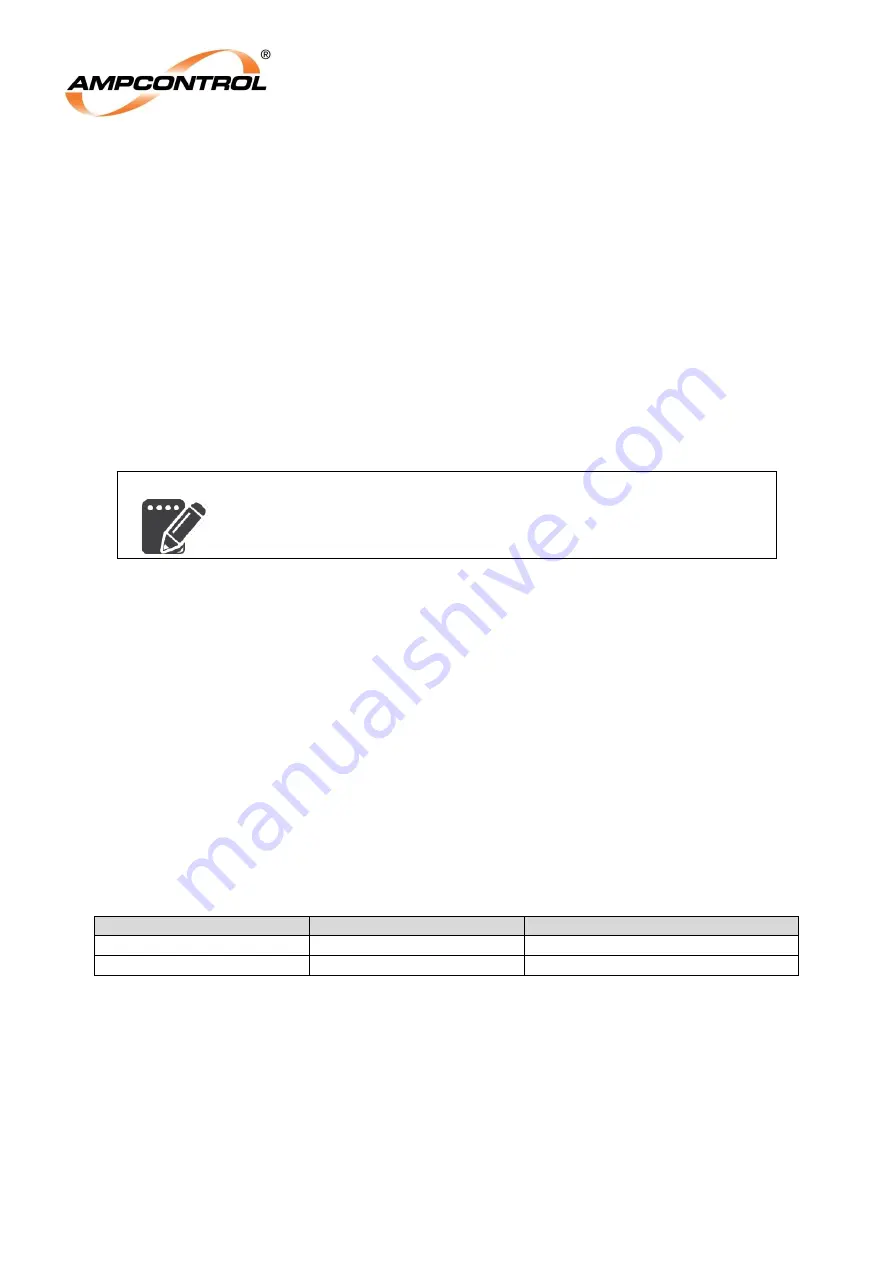
Ampcontrol Pty Ltd
– ABN 28 000 915 542
EFL PROTECTION RELAY USER MANUAL
MAG-178 Version 5
– MARCH/2020
Uncontrolled Copy - Refer to Ampcontrol Website for Latest Version
Page 17 of 23
A
P
P
R
OV
E
D
FOR
E
X
T
E
R
N
A
L
D
IS
TR
IB
U
T
ION
–
P
R
OP
E
R
T
Y
OF
A
M
P
C
ON
TR
OL
P
T
Y
LTD
–
N
O
T
T
O
B
E
R
E
P
R
OD
U
C
E
D
I
N
P
A
R
T
6.2 Earth Fault Lockout (EFLO) Protection Function
The EFL
’s EFLO Protection Function provides earth fault lockout protection for the connected outlet as
per AS/NZS 2081:2011 requirements. Whilst the outlet’s main contactor is open, the EFL Relay will
continually preform an LV test to monitor the impedance of each of the phase conductors to earth. When
the impedance of any of the phase conductors falls below the tripping threshold, defined below, the EFL
relay will initiate the EFLO trip and open the MCR output relay.
When the EFL Relay first energises, an EFLO test will be performed before the MCR output relay can
close. The initial EFLO test can take up to 10 seconds to complete, as the EFL Relay must first charge
the cable before the measurements can be taken. If the EFLO test is successful, the EFL Relay will then
energise the MCR output relay
– provided that there are no latched FC, EFLO or UV trips.
If an EFLO trip occurs, this trip will be latched in the memory of the EFL Relay. In order to clear an EFLO
trip, the External Reset terminals must be shorted together. This is typically achieved through the use of
an externally wired normally open push button.
NOTE
To
reset an EFLO trip
, the External Reset terminals of the EFL Relay
must be shorted together using an externally wired pushbutton or relay.
An EFLO trip cannot be cleared whilst the EFL Relay is de-energised.
The EFL trip point has been chosen to ensure compliance to the worst case scenario as defined in
AS/NZS 2081:2011 section 7.2.
“Earth fault lockout protection devices shall be designed to prevent energization of the circuit interrupting
device when the insulation resistance of any active conductor to earth is below 1 MΩ. This requirement
shall apply to any combination of active conductors to earth”
To ensure compliance with AS/NZS 2081 2011, the EFL set point is influenced by the configuration that
reduces the impedance to earth the greatest. This being all three phases shorted together through a
Load or connected motor, essentially causing a
ll three phase leakage impedance’s to be paralleled. An
electric motor or load can be treated as a short circuit for the applied DC test voltage. Under this
circumstance the EFL needs to trip before it detects
1MΩ to ensure compliance.
The individual leakage impedances for each phase in a un-shorted configuration (due to load or motor) is
then required to be
greater than 3MΩ to ensure the minimum level of safety is maintained.
Table 1: EFL Trip Threshold
EFL Trip Threshold
Outlet Configuration
Example
1Meg
Load on Outlet
Outlet cable terminated by Motor
3Meg
Open Circuit Outlet
Shuttle car with incomer contactor
6.2.1 Test Delay Input
This input should only be utilised when the EFL has been installed in an outlet configured as a Fan
starter implementing a burp sequence. When shorted, this input will prevent the EFL initiating the EFLO
checks when the Main Contactor opens. This test delay is limited to 16 seconds after the MCI has
indicated the Main Contactor has opened.
Burp sequences should not be greater than 15 seconds when this mode is used. Once the Main
Contactor has been closed for greater than 25 seconds the EFL will operate as per normal. This
indicates that the burp sequence has ended and will then initiate an EFLO check after Main contactor
has opened (and the Back EMF Timer has ended).






































